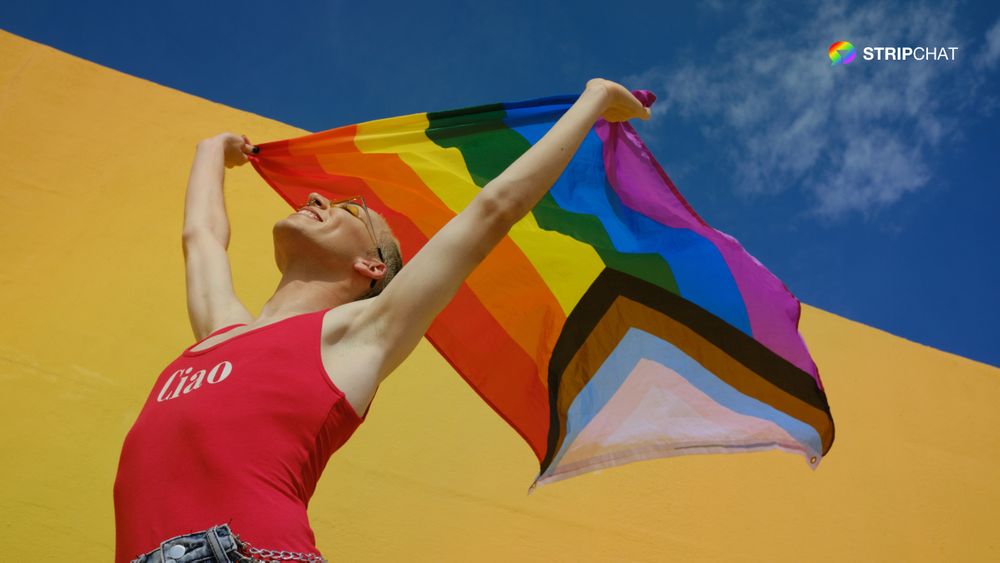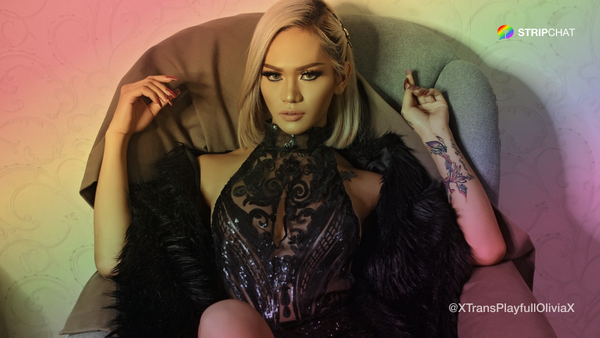Pride Flags Meaning: All LGBTQ+ Flags Names and Difference
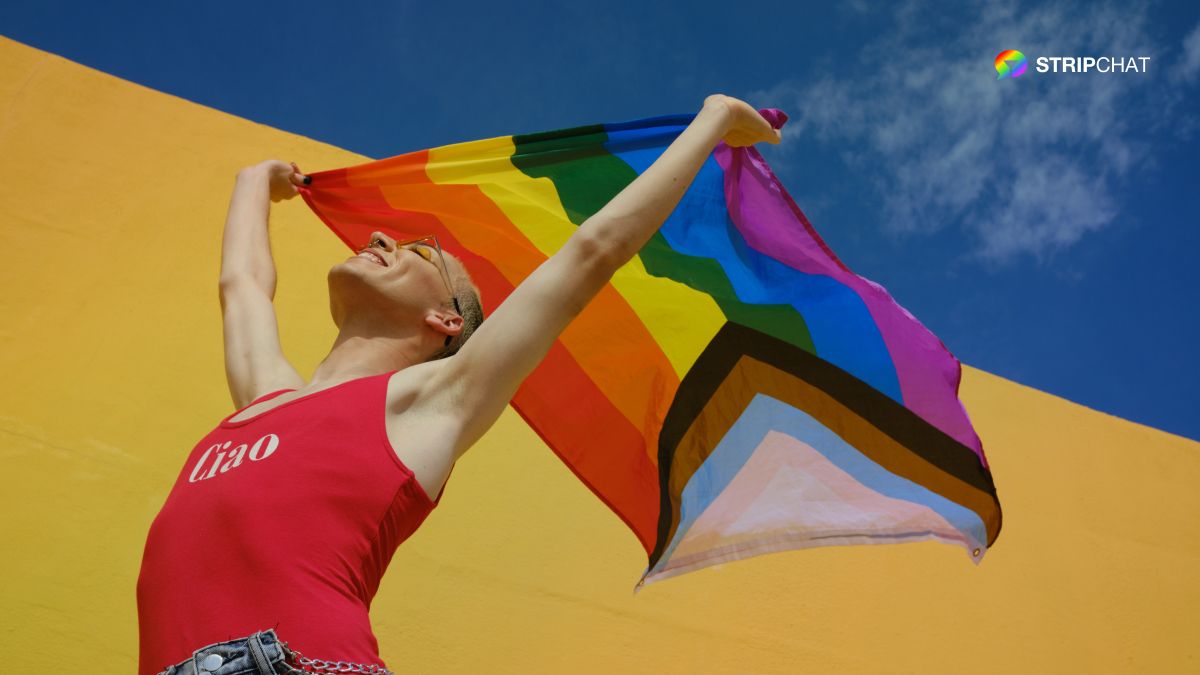
Everybody knows the rainbow flag, but did you know that there are other 50+ recognized LGBTQ flags? And are you interested in knowing which ones are these pride flags and meanings?
The original rainbow flag was designed by Gilbert Baker. However, with the increasing need to acknowledge and recognize specific communities (intersex, trans, etc.) within the diverse LGBTQ+ umbrella, new and more inclusive versions of the rainbow flag started to sprout. They each symbolize a different gender identity and sexual orientation within. Still, most queer individuals identify with the all-encompassing rainbow flag; it’s just that they also want their own individual one, and that’s how we ended up with all pride flags.
So in the light of Pride Month and to ensure that you’re not lost with so many colors and stripes, let us introduce you to the different pride flags and their meaning.
LGBTQ flags and meanings
Original pride flag
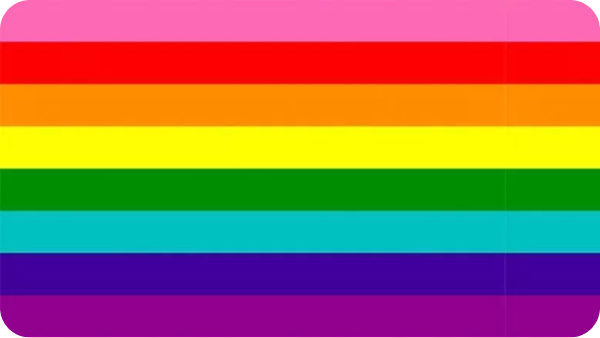
In 1978, artist Gilbert Baker designed the first pride flag by petition of openly gay politician Harvey Milk.
All LGBTQ flags have an element of joy to them, and the original pride flag is no different. It features many different colors that instill happiness. Nonetheless, there is no gay pride flag meaning, but several, as each color has a unique meaning: hot pink for sex, red for life, orange for healing, yellow for sunlight, green for nature, light blue for magic, dark blue for serenity, and violet for spirit. As Gilbert himself puts it “We needed something to express our beauty, joy and power. And the rainbow did just that.”
Traditional pride flag
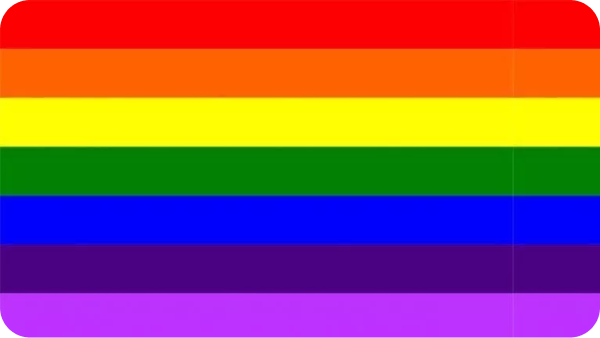
Following Milk’s assassination in 1978, the rainbow flag became super popular and in high demand. Baker had trouble producing the flags as the pink color was hard to find, so he opted to omit it, thus selling a seven-stripe flag.
Over time, the flag lost another color since six colors were apparently easier to produce than seven (although other reports claim that it was more about making the flag easier to hang on posts for parades). In any case, the six-stripe flag is the one you might be familiar with and will probably see more often.
Updated pride flag
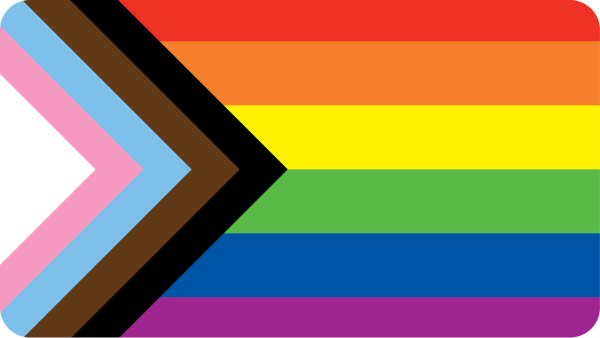
In recent years, in an effort to take the inclusion even further, the pride flag was updated with black and brown stripes to acknowledge queer people of color (whose activism inspired the very first Pride), and with the colors of the transgender pride flag.
Transgender flag
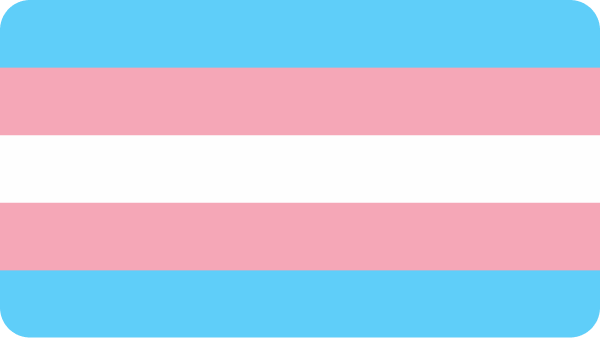
Monica Helms, a transgender activist, created this reversible flag in 1999. The light blue and light pink represent boys and girls respectively, whereas the white represents those who are transitioning or have neutral/no gender.
Nonbinary flag
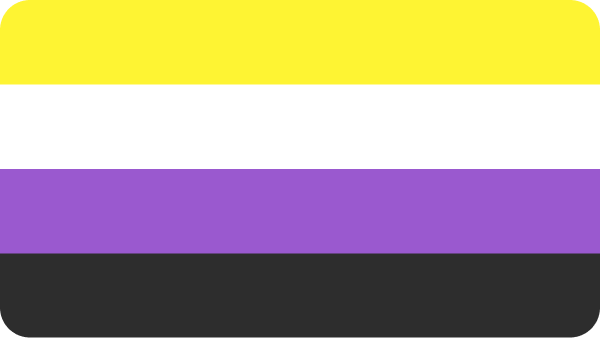
In 2014, 17-year-old Kye Rowan wanted to contribute to the gender pride flags creation and produced the nonbinary flag to represent those existing outside of the male-female gender binary. The yellow symbolizes exactly that, while the white is all genders, black no gender, and purple a mix of genders.
Bisexual flag
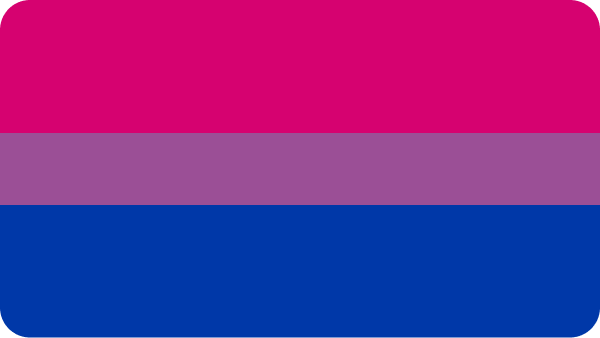
In 1998, Michael Page created this flag to spotlight bisexual people. The pink stands for “attraction to the same gender”, the blue for “attraction to different gender”, and they both overlap in a resulting purple that stands for “attraction to both genders”.
Lesbian flag
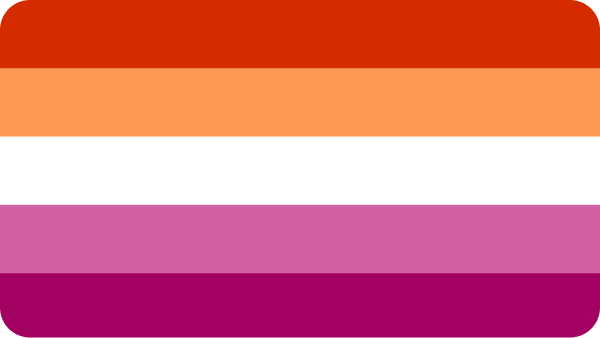
While there have been other versions of the lesbian flag, this one created by Emily Gwen, is intended to depict the full range of lesbian identities. Dark orange stands for gender nonconformity, orange for independence, light orange for community, white for unique relationships to womanhood, pink of serenity and peace, pink for love and sex and dark pink for femininity.
Pansexual flag
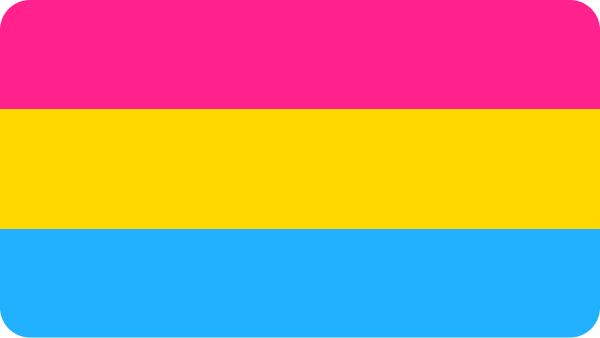
The pansexual flag is another one of the many sexual orientation flags that dates back to 2010, when it was created to distinguish pansexuality from bisexuality. A person who identifies as pansexual doesn’t see their attraction as something limited by genders.
The pink represents women, the blue men, and the yellow non binary and gender-nonconforming people.
Asexual flag
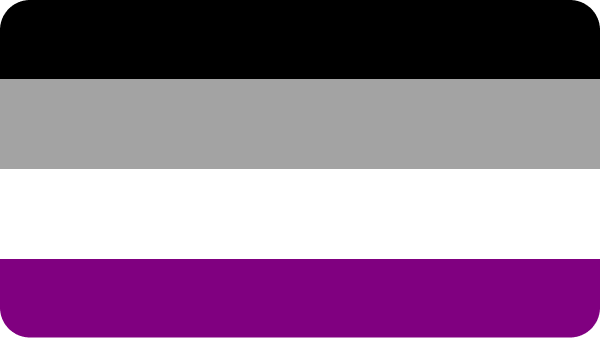
An asexual person is someone who doesn’t experience sexual feelings or desires. Simply put, it’s someone who’s not sexually attracted to anyone.
The asexual flag was created in 2010 after the Asexual Visibility and Education Network (AVEN) stated that they wanted to have a symbol “that belongs to all of us”. It was selected as the winner of a month-long message board search for an ace flag. Three different polling stages were involved in the movement to generate a flag, which crossed many threads.
Polling for the final vote was made available to other ace communities, including non-English forums, in an effort to include aces from outside the forum. Given that it is now widely used throughout the world, this was a wise decision.
The asexual pride flag has a straightforward four-bar layout that deftly shuns any mention of distinctive images like hearts or triangles. The asexuality flag matches the designs of other Gender and Sexual Minority (GSM) community pride flags and doesn't make any national references.
The back is for asexuality, the gray for graysexuals (between sexual and asexual) and demisexuals, the white for non-sexual partners, and the purple for community.
Demisexual flag
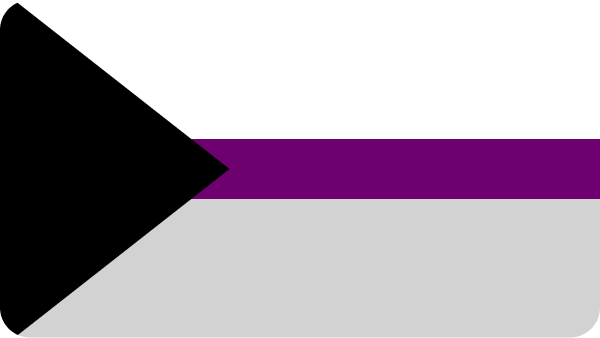
Demisexuality (sexual attraction happening only when there’s a strong emotional connection) exists on the asexual spectrum, hence the similar colors of the asexuality flag in a different layout.
Sadly, like many different lgbtq flags created in the internet age, it is unknown when or who developed the demisexual flag. However, given that it has the same colors as the asexual pride flag, we can guess that it was made after that flag (which was formed in 2010).
There is a black triangle protruding from the left side of the demisexual pride flag. It is lined with thick white lines at the top, thin purple lines in the middle, thick gray lines at the bottom. Similarly to its sister flag, the black means asexuality, the gray demisexuality, the white sexuality, and the purple community.
Aromantic flag
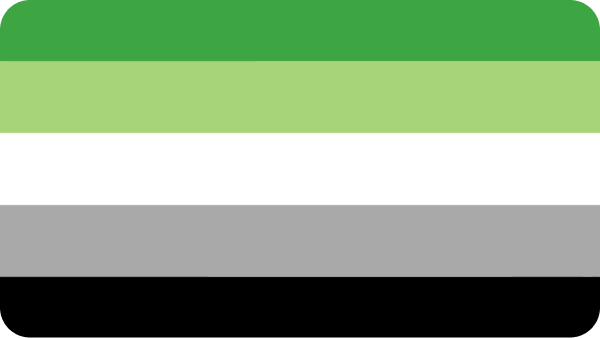
As opposed to an asexual person who doesn’t experience sexual attraction, aromantic people don’t experience romantic attraction. Aromantics have been represented by three different pride flags in the past few years. The original one included orange, green, black, and yellow stripes. Green represented the antithesis of romance, yellow friendship, orange aromantics, and black alloromantics who reject the conventional definitions of romance. This flag's creator and creation date are unknown.
Five stripes made up the next aromantic pride flag. Black, grey, yellow, light green, and dark green were the predominant hues. This LGBTQ flag was first designed on Tumblr, like many others, by a user named Cameron in 2014. The third flag design, which is the most recent and popular one, represents the aromantic pride movement, and it was also created by Cameron on November 16, 2014.
This last flag has four colours. Aromanticism is represented by dark green, the aromantic spectrum is represented by light green, relationships that are queer or nearly platonic are symbolized by white, grey is a symbol for demiromantic and grey-aromantic individuals, and finally, the range of sexuality is represented by black.
Polyamory flag
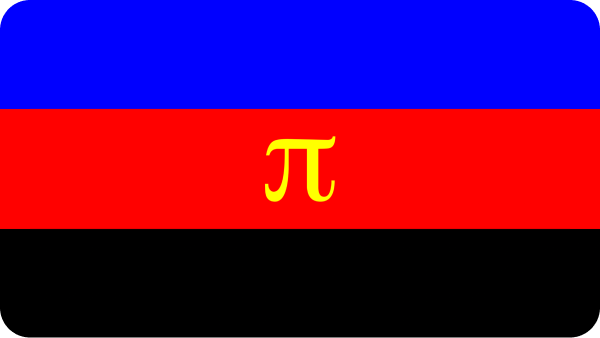
The polyamory flag was made by Jim Evans as far back as 1995. The blue stands for openness and honesty of all parts involved, the red for love and passion, and the black is to show support for those who cannot come out as polyamorous. The pi symbol in the middle comes to say that just as pi itself goes on indefinitely after the decimal, there are infinite partners available for those who are polyamorous.
All the pride flags had different versions throughout the years, and the polyamory flag is no less. There are other modified versions of the flag where the pi symbol is replaced with infinity hearts symbolizing how one can love several people at the same time.
Intersex flag
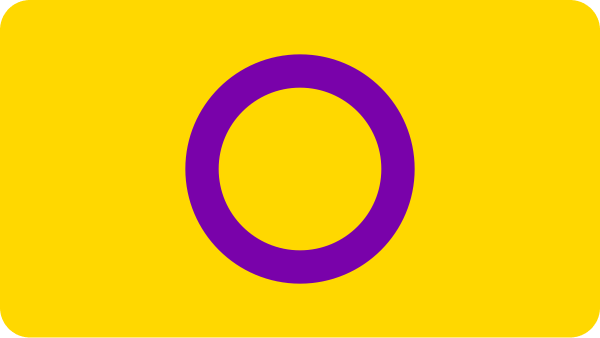
A person who exhibits both male and female sex traits at birth is referred to be intersex. Numerous newborns have chromosomal patterns, gonads, or genitalia that "do not match standard binary ideas of male or female bodies”, according to the Office of the United Nations High Commissioner for Human Rights.
Similar to the amount of people born with red hair, it is thought that 1.7% of the population is born with intersex features. Despite how often this is, intersex people are vastly underrepresented in society and the label intersex is still frequently misinterpreted.
The design of the most widely used intersex pride flag is a yellow background with a purple circle in the middle. Because none of these hues correspond to the conventional notions of binary identities, Morgan Carpenter of Intersex Human Rights Australia picked the colors yellow and purple to represent the intersex flag in 2013. (male and female).
According to Morgan, the circle on the intersex flag represents "wholeness and completion, as well as our potentialities," and is "unbroken and unornamented”. This represents the freedom to be who and how we want to be, for which we are still battling for bodily autonomy and genital integrity. Contrary to popular belief, it is not used to symbolize the diversity of sexual orientations and gender identities that community members possess.
But it's crucial to remember that not all intersex people have embraced this intersex flag. Some of them won't accept what it stands for. As a result, the intersex flag has undergone numerous variations over time, and numerous other LGBTQ+ flags have also been used. This is the most well-known, though.
We adore how the circle in the middle of the intersex flag serves as a constant reminder that, despite popular misconceptions and social conventions, intersex persons are entire and perfect in the ways they choose to be. And that’s an idea that most pride flag meanings also convey; just be who you want to be.
Genderfluid flag
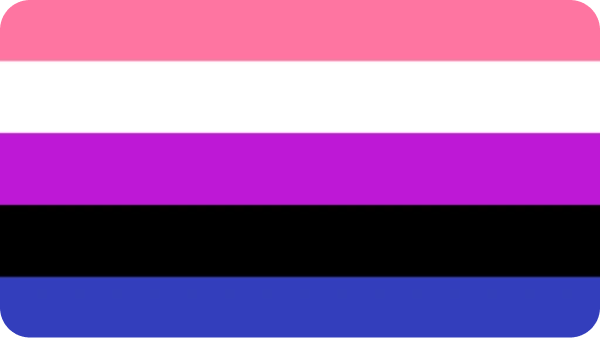
This flag was designed in 2012 by J.J. Poole to embody everything that genderfluidity includes: pink for femininity, blue for masculinity, white for lack of gender purple for the combination of masculine and femenine, and black for genders that do not share traits with the feminine or masculine.
Polysexual flag
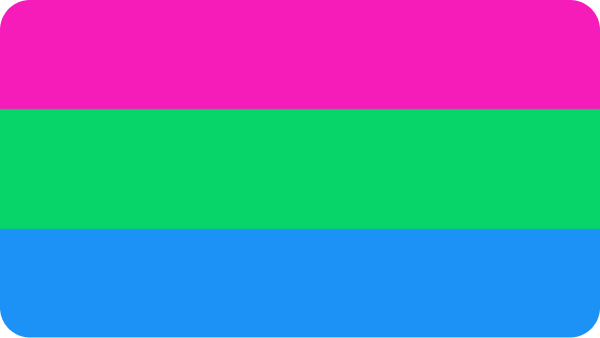
Polysexuality expresses attraction to multiple different genders, but not every single one. Its flag was created on Tumblr in 2012. Pink stands for attraction to women, blue for attraction to men, and green for nonconforming genders.
Agender flag
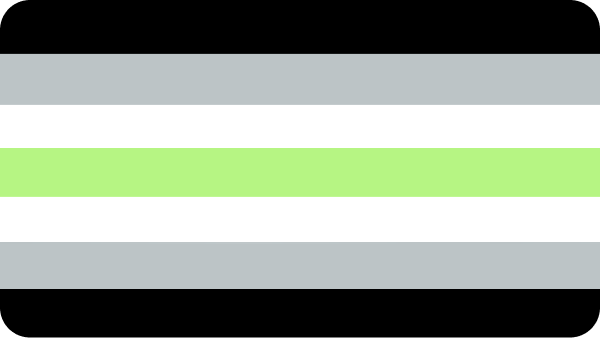
A person who does not identify as having a specific gender is referred to as being agender. Agender can also be referred to as genderfree, neutrois, gender blank, or genderless.
Designer Salem X created this reversible flag to represent the rejection of gender. It contains seven horizontal stripes of equal width. Like with other pride flags meaning, the black and white are for absence of gender, the gray for semi-genderlessness, and the green for nonbinary genders.
Straight ally flag
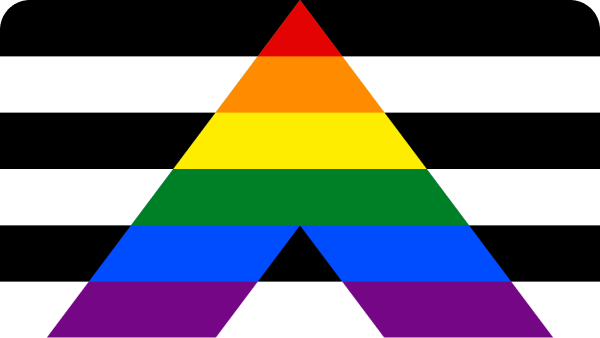
Created in the late 2000s, this flag, sometimes known as the ally flag, is meant to acknowledge allies of the LGBTQ+ community and their fight for equality.
A straight ally is a heterosexual or cisgender individual who is aware of the prejudice that the LGBTQ population experiences because of their gender identity, sexual orientation, or mode of expression. Although they do not identify as a member of the gay rainbow family, they support LGBTQ+ causes, believe in pride month flags, and work to make the world more inclusive.
Sadly, the creator or designer of the straight ally flag is unknown. What is understood about it, though, is that the LGBTQ pride flag and the straight flag were combined to create the straight ally flag.
The original gay pride flags colors created by Baker are absent from the straight ally flag. This flag omits pink and turquoise and solely uses the more contemporary six-color flag. The straight ally flag stands for cooperation and allyship with the LGBTQ community.
The straight ally flag denotes the following: "A" stands for “ally”, the straight flag is depicted by the black and white stripes, and the LGBT community is represented by the rainbow hues in the letter “A”.
Remember that flying this flag is not a fad. It comes with an awareness of the difficulties LGBTQ individuals encounter and the knowledge that it is your duty to take action to address those difficulties.
It's also not necessary to fly the straight ally flag in order to support the LGBTQ community just because it exists. You will show your support in several ways if you are a loyal ally, without the need of sexuality flags.
You can always check the latest news on our Twitter and Reddit.


